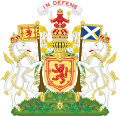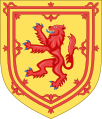
A flag is a piece of fabric with a distinctive design and colours. It is used as a symbol, a signalling device, or for decoration. The term flag is also used to refer to the graphic design employed, and flags have evolved into a general tool for rudimentary signalling and identification, especially in environments where communication is challenging. Many flags fall into groups of similar designs called flag families. The study of flags is known as "vexillology" from the Latin vexillum, meaning "flag" or "banner".
Flag terminology is the nomenclature, or system of terms, used in vexillology, the study of flags, to describe precisely the parts, patterns, and other attributes of flags and their display.

The flag of England is the national flag of England, a constituent country of the United Kingdom. It is derived from Saint George's Cross. The association of the red cross as an emblem of England can be traced back to the Late Middle Ages when it was gradually, increasingly, used alongside the Royal Banner. It became the only saint's flag permitted to be flown in public as part of the English Reformation and at a similar time became the pre-eminent maritime flag referred to as a white ensign. It was used as a component in the design of the Union Jack in 1606.

A saltire, also called Saint Andrew's Cross or the crux decussata, is a heraldic symbol in the form of a diagonal cross. The word comes from the Middle French sautoir, Medieval Latin saltatoria ("stirrup").

The coat of arms of the United Kingdom are the arms of dominion of the British monarch. They are both the personal arms of the monarch, currently King Charles III, and the arms of the state. In addition to the monarch, the arms are used by state institutions including the Government of the United Kingdom, the Parliament of the United Kingdom, and the British judiciary. Differenced versions of the arms are used by members of the British royal family. The monarch's official flag, the Royal Standard, is the coat of arms in flag form.

The coat of arms of England is the coat of arms historically used as arms of dominion by the monarchs of the Kingdom of England, and now used to symbolise England generally, but not officially. The arms were adopted c.1200 by the Plantagenet kings and continued to be used by successive English and British monarchs; they are currently quartered with the arms of Scotland and Ireland in the coat of arms of the United Kingdom. Historically they were also quartered with the arms of France, representing the English claim to the French throne, and Hanover.

A tarpaulin or tarp is a large sheet of strong, flexible, water-resistant or waterproof material, often cloth such as canvas or polyester coated with polyurethane, or made of plastics such as polyethylene. Tarpaulins often have reinforced grommets at the corners and along the sides to form attachment points for rope, allowing them to be tied down or suspended.

A vexilloid is any flag-like (vexillary) object used by countries, organisations, or individuals as a form of representation other than flags. American vexillologist Whitney Smith coined the term vexilloid in 1958, defining it as
An object which functions as a flag but differs from it in some respect, usually appearance. Vexilloids are characteristic of traditional societies and often consist of a staff with an emblem, such as a carved animal, at the top.
Out-of-home (OOH) advertising, also called outdoor advertising, outdoor media, and out-of-home media, is advertising experienced outside of the home. This includes billboards, wallscapes, and posters seen while "on the go". It also includes place-based media seen in places such as convenience stores, medical centers, salons, and other brick-and-mortar venues. OOH advertising formats fall into four main categories: billboards, street furniture, transit, and alternative.

The vexillum was a flag-like object used as a military standard by units in the Roman army. A common vexillum displayed imagery of the Roman aquila on a reddish backdrop.

The Royal Banner of the Royal Arms of Scotland, also known as the Royal Banner of Scotland, or more commonly the Lion Rampant of Scotland, and historically as the Royal Standard of Scotland, or Banner of the King of Scots, is the royal banner of Scotland, and historically, the royal standard of the Kingdom of Scotland. Used historically by the Scottish monarchs, the banner differs from Scotland's national flag, the Saltire, in that its official use is restricted by an Act of the Parliament of Scotland to only a few Great Officers of State who officially represent the Monarchy in Scotland. It is also used in an official capacity at royal residences in Scotland when the Head of State is not present.

The gonfalon, gonfanon, gonfalone is a type of heraldic flag or banner, often pointed, swallow-tailed, or with several streamers, and suspended from a crossbar in an identical manner to the ancient Roman vexillum. It was first adopted by Italian medieval communes, and later, by local guilds, corporations and districts. The difference between a gonfalon with long tails and a standard is that a gonfalon displays the device on the non-tailed area, and the standard displays badges down the whole length of the flag.
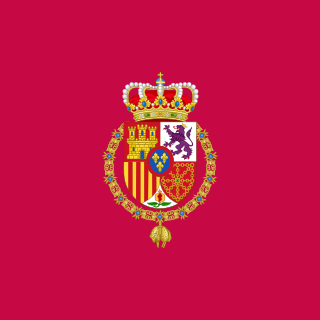
The Royal Standard of Spain is the official flag of the King of Spain. It comprises a crimson square, traditional colour of both Castilian and Spanish monarchs, with the coat of arms of the King in the center. It is raised over the official royal residence in Madrid, the Palacio de la Zarzuela and other Spanish royal sites, when the monarch is in residence and displayed on his official car as small flag. The current flag was adopted when Felipe VI acceded the throne as King of Spain on 19 June 2014. The Royal Standard is regulated by Rule 2 of Royal Decree 527/2014, 20 June, an amendment to Title II of Spanish Royal Decree 1511/1977 adopting Flags, Standards, Guidons, Insignia and Emblems Regulation.
Vinyl banners are a form of banners made of vinyl. The most commonly used material is PVC. Most banners are now digitally printed on large format inkjet printers which are capable of printing a full color outdoor billboard on a single piece of material. They are used for outdoor advertising.

Throughout most of the history of Poland, the banner of Poland was one of the main symbols of the Polish State, normally reserved for use by the head of state. Although its design changed with time, it was generally a heraldic banner, i.e., one based directly on the national coat of arms: a crowned White Eagle on a red field. The banner should not be confused with the flag of Poland, a white and red horizontal bicolor, officially adopted in 1919.

In heraldry and vexillology, a heraldic flag is a flag containing coats of arms, heraldic badges, or other devices used for personal identification.
For most of its history, the Eastern Roman (Byzantine) Empire did not use heraldry in the Western European sense of permanent motifs transmitted through hereditary right. Various large aristocratic families employed certain symbols to identify themselves; the use of the cross, and of icons of Christ, the Theotokos and various saints is also attested on seals of officials, but these were often personal rather than family emblems. Likewise, various emblems were used in official occasions and for military purposes, such as banners or shields displaying various motifs such as the cross or the labarum. Despite the abundance of pre-heraldic symbols in Byzantine society from the 10th century, only through contact with the Crusaders in the 12th century, and particularly following the Fourth Crusade (1202–1204) and the establishment of Frankish principalities on Byzantine soil from 1204 onwards, did heraldic uses penetrate in Byzantium. A native Byzantine heraldry began to appear in the middle and lower rungs of aristocratic families in the 14th century, coinciding with the decline of imperial authority and with the fragmentation of political power under the late Palaiologan emperors. However, it never achieved the breadth of adoption, or the systematization, of its Western analogues.
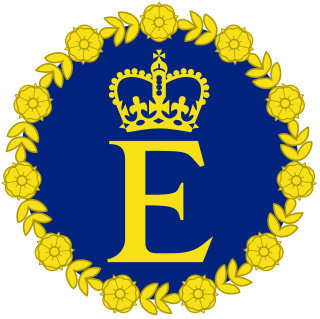
Queen Elizabeth II had a variety of flags to represent her personally and as head of state of several independent nations around the world. They were usually used on any building, ship, car, or aircraft where she was present.

Aerial advertising is a form of advertising that incorporates the use of flogos, manned aircraft, or drones to create, transport, or display, advertising media. The media can be static, such as a banner, logo, lighted sign or sponsorship branding. It can also be dynamic, such as animated lighted signage, skywriting, or audio.
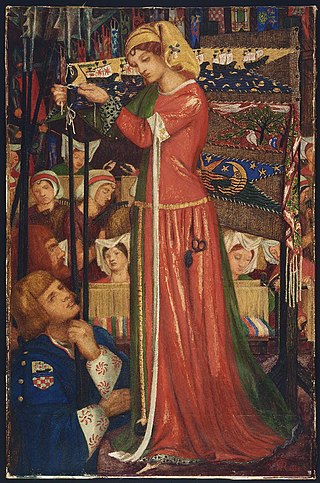
A flag is a distinctive piece of fabric used as a symbol, a signalling device, or for decoration. While the origin of flags is unknown, flag-like symbols have been described as far back as 11th century BC China and have been used by other ancient civilisations such as Egypt and Rome.

